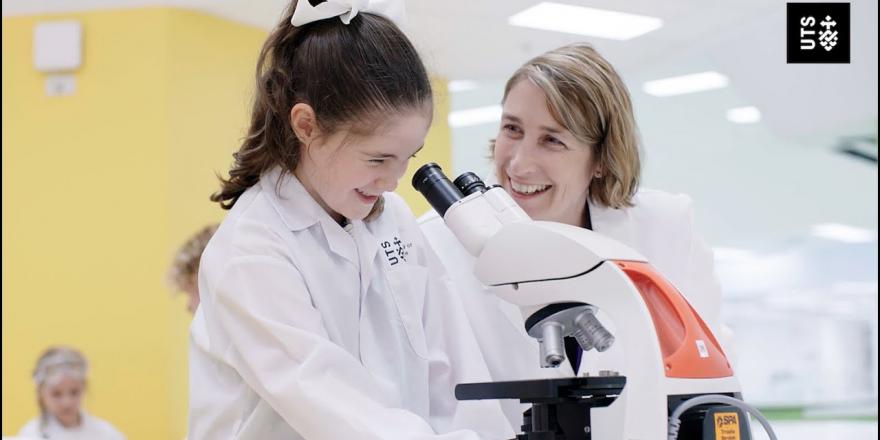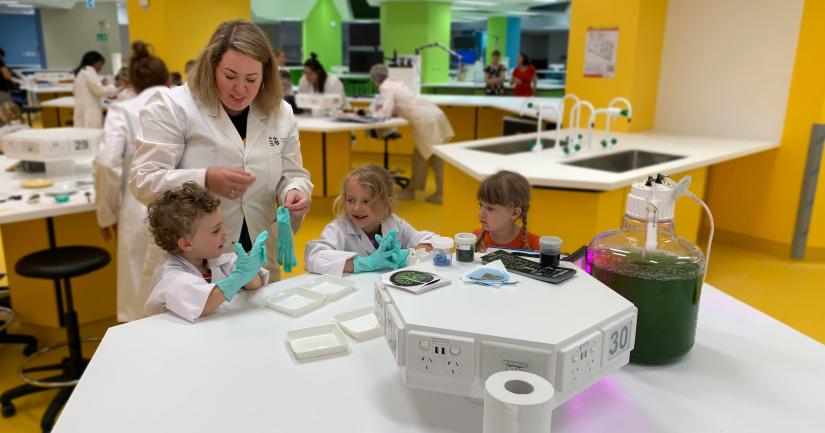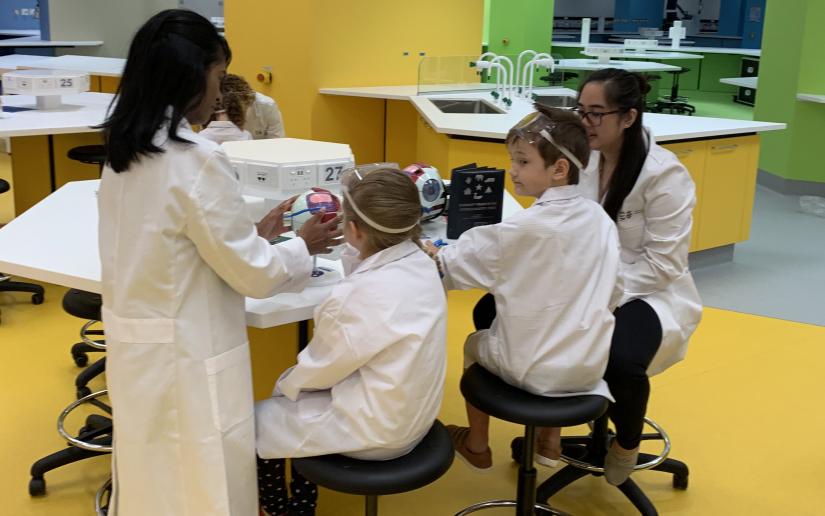Research for beginners
Grab your lab coat and goggles – it’s time to discuss why it’s so important to communicate science to young children.

When we want to encourage people into STEM people tell me it's really the three to five year olds that matter most. It's at that time that they get most interested in science because they're curious.
Science doesn't happen in a vacuum and kids are the future of science so we need to make sure that they stay engaged and to keep a pipeline of not only interested people in terms of science being so integral to modern life, but also building that next generation of scientists.
Everybody's got some curiosity somewhere, and whatever your field or interest specifically, there is something scientific, there's an interesting question to be asked. You only have to listen to some of the questions that children were producing today just from the top of their heads and it's great to see that when there's that diversity of questions, there's also that diversity of curiosity and creativity to be found.
Why do sharks eat humans?
That’s a good question. So did you know that sharks don't really want to eat humans? It often happens when they can't really tell that it's a human, they mistake you for some sort of other food. So most of the time we’re ok.
Or a fish!
Exactly! They might misunderstand us for a fish.
I liked doing finger prints, and we got all messy!
The coolest thing I learnt today was tasting the honey.
Magnets if they connect and they take a long time to fall off.
Kids can't be what they can't see. So if we're out there, we're talking to kids, we're being more involved in the community and really keeping that passion for science over their lifetime, then that will inspire more kids to come into science.
Cause I want to be an engineer, and a doctor, and a scientist at the same time.
Science is fun!
Was it an awesome day?
Yes!
Ok, give me a high five? Nice!
It’s an experience not many kids have - the opportunity to observe what scientists get up to in a world-class laboratory.
University of Technology Sydney (UTS) academics invited a group of four- to seven-year-olds into the Hive SuperLab to engage with research going on around campus.
The kids tasted honey samples with a microbiologist and pulled apart model eyeballs with orthoptists. They talked numbers with a mathematician and sharks with a marine scientist. And they asked questions in an almost endless stream.
Researchers say it’s never too early to get kids involved with science.
“It’s really around the three- to five-year-old time that you spark that curiosity, so I think it’s important we start early,” said Liz Harry, Professor of Biology in the iThree Institute (infection, immunology and innovation).
Dr Xanthe Spindler is a forensic scientist, and spent the day teaching kids how to make fingerprints.
“They're just so fascinated by the problem solving, the different variations of nature and everything that goes on around them.
“Science doesn't happen in a vacuum and kids are the future of science so we need to make sure that they stay engaged. We need to keep a pipeline of people because science is so integral to modern life.”
So what did Dr Spindler learn from the kids?
“Fingerprinting is way more fun than I thought it was, which is an extra level of fun because I love what I do!”

Dr Alex Thomson, from the UTS Deep Green Biotech Hub, teaching the kids about all the ways algae is useful.
Dr Stephen Woodcock is with the School of Mathematical and Physical Sciences, as well as the Climate Change Cluster (C3), using his maths to explain biological and ecological systems. He said he was fascinated by the range of questions kids asked about the science they saw at the Hive SuperLab.
“I think everybody’s got some curiosity somewhere, and whatever your field of interest specifically, there’s an interesting question to be asked. You only have to listen to some of the questions children were producing from the top of their heads and it was great to see.”
Professor Harry says she was interested in what questions the children asked.
“It sparked my curiosity and gave me something completely different to what I might be thinking, which is always what you want to do in science.”
Dr Spindler says it’s important scientists make themselves more visible to kids.
“I think we can inspire more kids by just being out in the community and engaging more, and really explaining what we do as scientists. That will help kids really think about the future in terms of where careers are, and that science is a fascinating thing they can continue doing for their entire lives.
“What struck me was a lot of the kids were saying that they love the creativity and the thinking of science, which is not something an adult off the street would think is interesting about science,” said Dr Spindler.
Dr Woodcock agrees it’s the job of academics and scientists to get out into the community and communicate more.
“Not just what we do, but why we do it, and why that affects a wider society and how that helps people. People genuinely want to be doing something good and doing something positive with our lives. If the message is that scientists are there to help in terms of improving health, improving the environment, improving machines or energy usage, people are naturally inspired by that.”

Researchers say it's never too early to start learning the basics of science, technology, engineering and maths.
Dr Woodcock says there’s a degree of misunderstanding about science in the community.
“It's very easy to picture people in white coats staring down the microscope and see it as very isolated from the real world. Some science is very much in a laboratory, is very clinical, but some of it is inspired by real world questions and real world problems.”
Speaking of white coats and microscopes, what makes the Hive SuperLab so special?
“Science shouldn’t be a solo journey, it should be a discussion. The Hive SuperLab enables people to initiate discussion, to initiate doing things, rather than sort of sitting and being spoon fed.
“It’s an active place, and it lifts your imagination,” said Professor Harry.
The Hive SuperLab, designed to a PC2-standard, is the biggest and most technologically advanced lab at UTS. The space accommodates up to 270 students, with specialist high-tech audio-visual facilities allowing seven classes to run simultaneously.
It’s a practical, collaborative space that enables students and researchers from different science disciplines to work side by side.
Dr Spindler describes the lab as a vibrant space to be in.
“I think it does spark that more creative side of science, rather than it feeling like a clinical laboratory.”
Professor Harry says the opportunity for the children to experience the lab was very special.
“This is a very special type of lab, and it gives the kids the ability to feel special that they’re in this place together with people who are real scientists.
“Their eyes were open, and they had a good laugh.”
